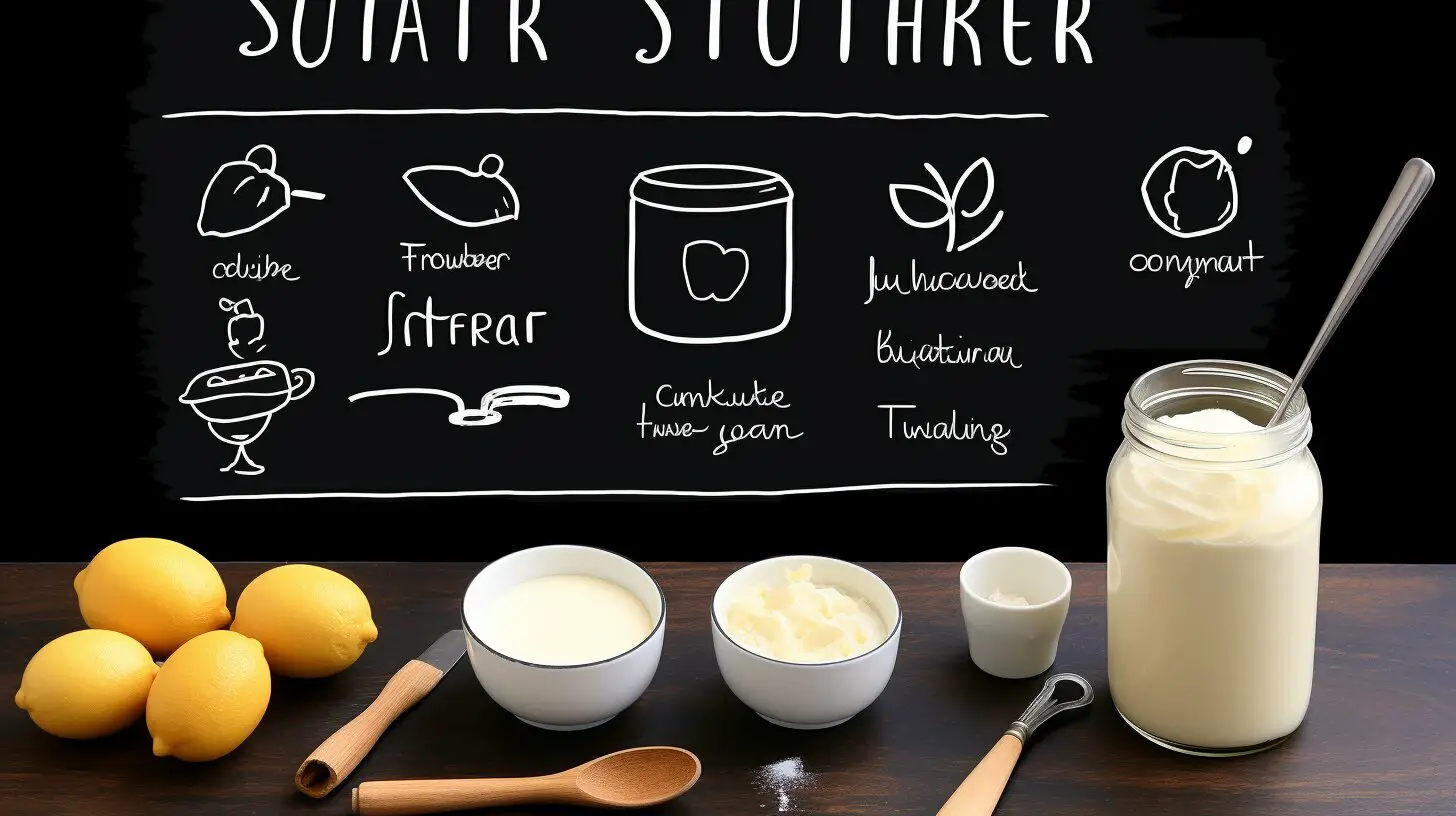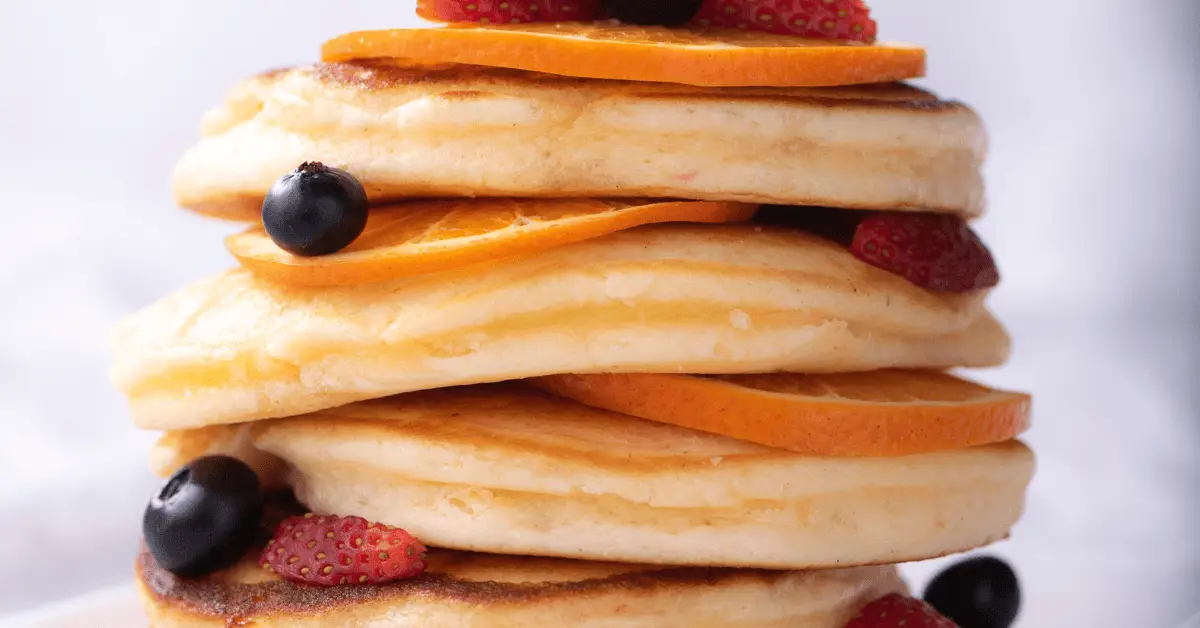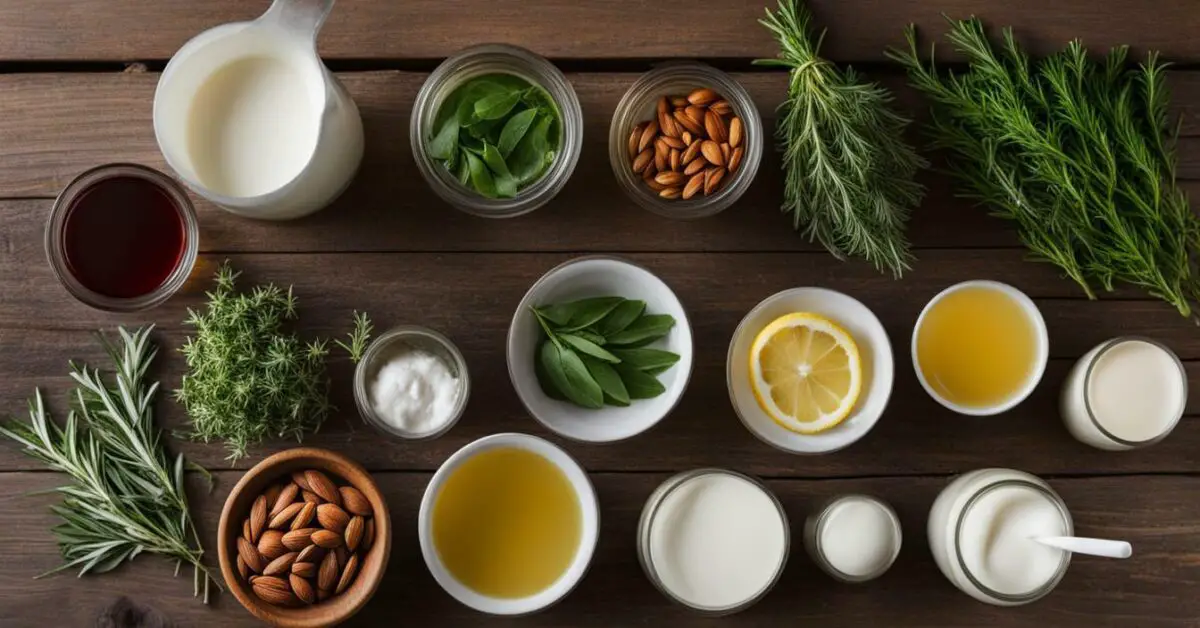
This post may contain affiliate links. Please read my disclosure for more information.
If you don’t have buttermilk on hand, there are several easy substitutes you can use in cakes. One option is to mix lemon juice or vinegar with dairy milk or non-dairy milk like soy or almond milk. Another option is to combine sour cream or plain yogurt with water or milk. Additionally, you can use cream of tartar with milk, lactose-free milk with lemon juice or vinegar, or plain kefir as a substitute. For a dairy-free and vegan option, you can use non-dairy milk with lemon juice or vinegar. Lastly, you can use buttermilk powder mixed with water as a substitute. These substitutions can be used in equal amounts as the buttermilk called for in the recipe.
Using Lemon Juice or Vinegar with Dairy Milk
One option for substituting buttermilk in cakes is to mix lemon juice or vinegar with dairy milk. This combination creates an acidic environment similar to that of buttermilk, resulting in tender and moist cakes. To make this substitution, simply add 1 tablespoon of lemon juice or vinegar to a measuring cup and then fill the cup with dairy milk (regular or low-fat) up to the 1-cup mark. Let the mixture sit for about 5 minutes to allow the acid to react with the milk.
When using lemon juice or vinegar as a substitute for buttermilk, it’s important to note that the acidity may slightly affect the taste of the cake. This can be particularly noticeable when using vinegar. However, the difference is usually subtle and most people won’t be able to detect it once the cake is fully baked. For the best results, be sure to mix the lemon juice or vinegar with the milk just before adding it to the cake batter.
Using Lemon Juice or Vinegar with Dairy Milk
In addition to providing acidity, lemon juice and vinegar also help to activate the leavening agents in the cake batter, resulting in a light and fluffy texture. This substitution is particularly useful when you don’t have buttermilk on hand or if you’re looking for a dairy-based alternative. So the next time you find yourself without buttermilk, feel confident in using lemon juice or vinegar with dairy milk to achieve delicious cakes.
Non-Dairy Milk Options
If you prefer non-dairy milk, you can also use soy milk or almond milk as a substitute for buttermilk in cakes. These non-dairy milk alternatives provide a similar creamy texture and mild flavor that can complement your cake recipes.
When using soy milk as a substitute, make sure to choose the unsweetened variety to avoid altering the taste of your cakes. Almond milk, on the other hand, adds a subtle nutty note to your baked goods. Both options can be found in most grocery stores and are readily available.
When substituting non-dairy milk for buttermilk, it is important to maintain the same ratio. For every cup of buttermilk required in a recipe, simply replace it with an equal amount of soy milk or almond milk. This will ensure that the moisture and acidity provided by buttermilk are preserved, resulting in a deliciously moist and tender cake.
Sour Cream or Plain Yogurt with Water or Milk
Another alternative to buttermilk is to combine sour cream or plain yogurt with water or milk. This option provides a creamy and tangy substitute that can enhance the flavor and texture of your cakes. To use sour cream or plain yogurt as a replacement, simply mix equal parts of either ingredient with water or milk.
For example, if the recipe calls for 1 cup of buttermilk, you can combine 1/2 cup of sour cream or plain yogurt with 1/2 cup of water or milk. Stir well until all the ingredients are fully incorporated. This substitution works particularly well in recipes that require a moist and tender crumb.
If you prefer a slightly thicker consistency, you can decrease the amount of water or milk used. On the other hand, if you desire a lighter texture, you can increase the liquid content. Adjusting the ratios will allow you to customize the substitute to suit your specific recipe and taste preferences.
It’s important to note that the acidity of sour cream or plain yogurt can help activate the leavening agents in your cake batter, resulting in a well-risen and flavorful final product. So don’t be afraid to experiment with this versatile buttermilk substitute in your next baking adventure!
Cream of Tartar with Milk
Cream of tartar combined with milk can also be used as a substitute for buttermilk in cakes. Cream of tartar, also known as potassium bitartrate, is a powdery substance commonly used in baking. When combined with milk, it creates an acidic environment similar to that of buttermilk, which helps activate baking soda and leaven the cake.
To make this substitution, simply mix 1 teaspoon of cream of tartar with 1 cup of milk. Let the mixture sit for a few minutes to allow the acid to work its magic. The resulting mixture can be used as a 1:1 replacement for buttermilk in your cake recipe.
This substitution is particularly useful for individuals who may not have buttermilk on hand but still want to achieve the same tender and moist texture that buttermilk imparts to cakes. It is important to note that cream of tartar may slightly alter the flavor profile of the cake, so it is best suited for recipes where its slightly tangy taste complements the other ingredients.
Lactose-Free Milk with Lemon Juice or Vinegar
If you require a lactose-free option, you can use lactose-free milk with lemon juice or vinegar as a substitute for buttermilk in cakes. Lactose-free milk is a great alternative for individuals with lactose intolerance, allowing them to enjoy delicious cakes without any digestive discomfort.
To create the substitute, simply mix 1 tablespoon of lemon juice or vinegar with 1 cup of lactose-free milk. Stir the mixture well and let it sit for about 5 minutes to allow the acid to work its magic. This will create a tangy and acidic milk substitute that will mimic the properties of buttermilk in your cake recipe.
The combination of lactose-free milk and acid works to create a similar texture and flavor as buttermilk, resulting in a moist and tender cake. You can confidently use this substitute in equal amounts as the buttermilk called for in your recipe.
Remember, when using this substitute, the acid is an essential component to achieve the desired results. So, don’t skip adding lemon juice or vinegar to the lactose-free milk. With this lactose-free option, you can confidently bake delicious cakes that everyone can enjoy, even those with lactose intolerance.
Plain Kefir as a Substitute
Plain kefir can be used as a substitute for buttermilk in cakes, thanks to its similar qualities. Kefir is a fermented dairy product that has a tangy flavor and creamy consistency, making it a suitable alternative to buttermilk in baking recipes. It contains beneficial probiotics and enzymes that can enhance the texture and flavor of your cakes.
To use plain kefir as a substitute for buttermilk, simply replace the buttermilk called for in the recipe with an equal amount of kefir. This substitution will provide the necessary acidity and moisture to the cake batter, resulting in a tender and moist final product. You can also adjust the consistency of the kefir by adding a small amount of water if needed.
When using kefir as a substitute, it’s important to note that the tangy flavor of kefir may be more pronounced compared to buttermilk. However, this can add a unique and delicious twist to your cakes. If you prefer a milder flavor, you can mix the kefir with milk to achieve a more balanced taste. Experimentation is key to finding the perfect balance of flavors for your preference.
Non-Dairy Milk with Lemon Juice or Vinegar (Vegan Option)
If you follow a vegan or dairy-free diet, you can use non-dairy milk with lemon juice or vinegar as a substitute for buttermilk in cakes. This simple alternative allows you to enjoy delicious baked goods without compromising your dietary preferences.
To make this substitution, start by choosing your favorite non-dairy milk, such as almond milk, soy milk, or oat milk. Measure out the amount of milk needed for the recipe and pour it into a mixing bowl. To mimic the acidity of buttermilk, add one tablespoon of lemon juice or white vinegar to the milk.
Let the mixture sit for about five minutes. During this time, the acid will react with the milk, creating a slightly thickened and tangy liquid that closely resembles the texture and flavor of buttermilk. Once the five minutes are up, your non-dairy buttermilk substitute is ready to use.
Remember to adjust the measurements of the substitute to match the amount of buttermilk required in the recipe. This will ensure that your cakes turn out moist, tender, and full of flavor. With this vegan-friendly substitute, you can confidently bake your favorite cakes without sacrificing taste or dietary preferences.
Buttermilk Powder Mixed with Water
Buttermilk powder mixed with water can also be used as a substitute for buttermilk in cakes. This convenient option is a great alternative when you don’t have fresh buttermilk on hand. To use buttermilk powder, simply follow the reconstitution instructions on the packaging. Typically, you’ll mix a specific amount of powder with an equal amount of water, creating a buttermilk-like liquid.
When using buttermilk powder as a substitute, it’s important to adjust the measurements to match the amount of buttermilk called for in the cake recipe. For example, if the recipe calls for 1 cup of buttermilk, you would mix 1 cup of water with the appropriate amount of buttermilk powder. This ensures that you maintain the desired consistency and flavor in your cake.
Buttermilk powder is a pantry staple for many bakers, as it has a long shelf life and can be easily reconstituted when needed. Keep in mind that the flavor and texture of cakes made with buttermilk powder may differ slightly from those made with fresh buttermilk. However, it is still a reliable substitute that will yield delicious results in your baked goods.
Equal Amount Substitutions
When using these substitutions, it’s crucial to use equal amounts as the buttermilk measurement in the recipe. This ensures that the moisture and acidity levels in your cake batter remain balanced, resulting in a successful bake.
Whether you’re using lemon juice or vinegar with dairy milk, non-dairy milk options like soy or almond milk, or even sour cream or plain yogurt with water or milk, the key is to match the quantity of buttermilk called for in your recipe. By doing so, you can maintain the desired texture and flavor in your cake.
If you decide to use cream of tartar with milk, lactose-free milk with lemon juice or vinegar, plain kefir, or non-dairy milk with lemon juice or vinegar for a vegan option, remember to measure them in equal amounts to the buttermilk stated in your recipe. This consistency in measurements helps ensure that your cake turns out just as moist, tender, and delicious as if you were using buttermilk.
To simplify the substitution process, you can also use buttermilk powder mixed with water in equal amounts to replace the buttermilk. This option is especially convenient if you don’t have any liquid milk alternatives on hand or prefer the versatility of buttermilk powder.
Baking Success with Buttermilk Substitutes
Follow these tips for baking success when using substitutes for buttermilk in your cake recipes. If you don’t have buttermilk on hand, there are several easy substitutes that you can use. One option is to mix lemon juice or vinegar with dairy milk or non-dairy milk like soy or almond milk. The acidity from the lemon juice or vinegar helps to mimic the tangy flavor and tenderizing properties of buttermilk.
Another option is to combine sour cream or plain yogurt with water or milk. This combination adds moisture and richness to your cakes, resulting in a tender crumb. It’s important to maintain the right balance between the sour cream or yogurt and the liquid to ensure the proper texture.
If you prefer a non-dairy alternative, you can use plain kefir or lactose-free milk in combination with lemon juice or vinegar. These options provide similar acidity and moisture, making them suitable substitutes for buttermilk. Additionally, using non-dairy milk with lemon juice or vinegar creates a dairy-free and vegan-friendly alternative for those with dietary restrictions.
If you have buttermilk powder on hand, you can reconstitute it by mixing it with water. This creates a liquid that can be used as a substitute for buttermilk in cakes. Just make sure to follow the instructions on the packaging for the correct measurements.
Whatever substitute you choose, remember that these substitutions can be used in equal amounts as the buttermilk called for in the recipe. However, it’s always a good idea to adjust the measurements and make slight modifications to achieve the desired consistency and flavor.


